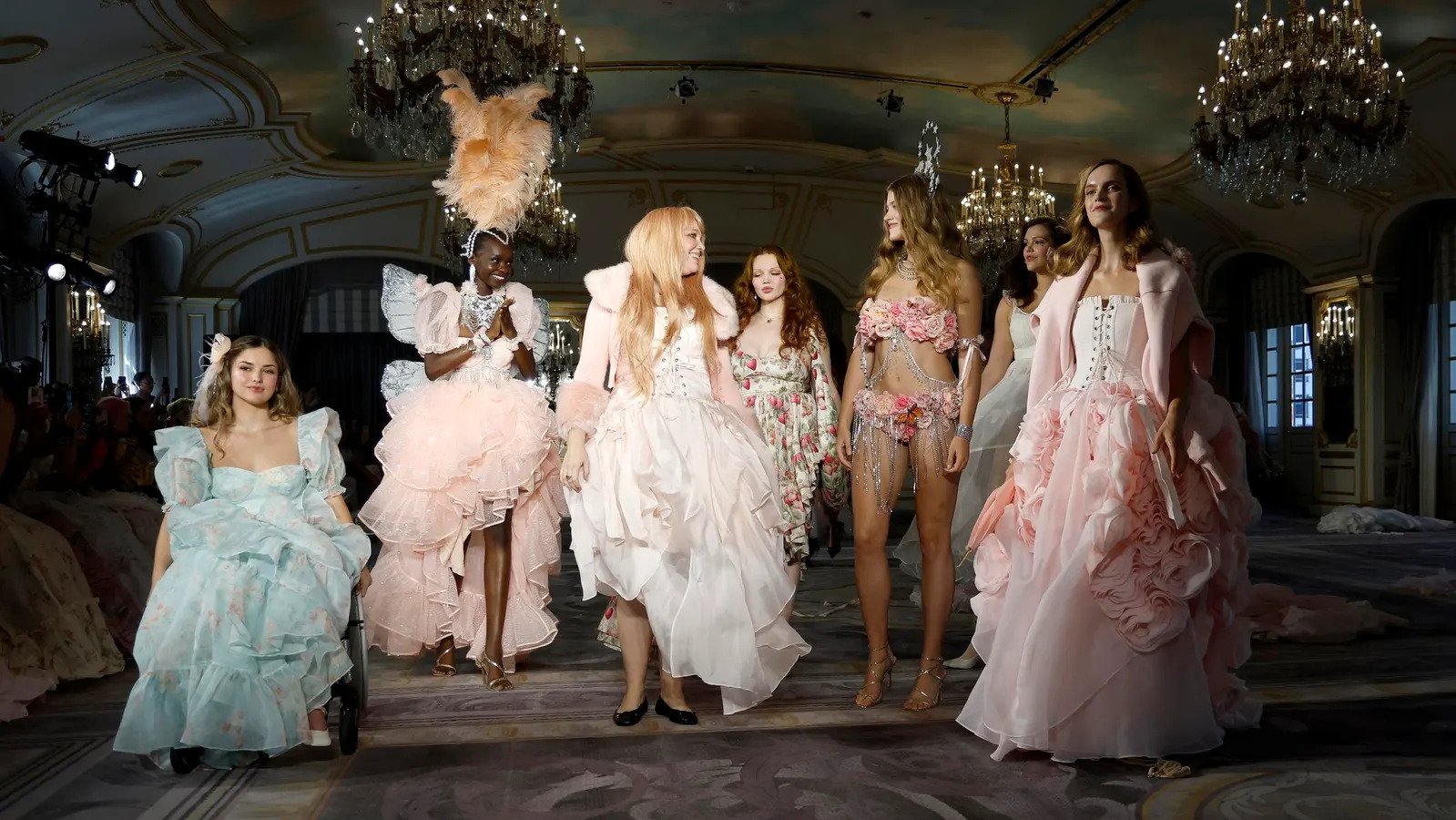Body Diversity on the Runway

Designer Kimberley Gordon at her NYFW show (Credit: Getty Images for Selkie)
Fashion shows typically consist of models that are a size two or smaller. And despite some change, fashion weeks across the globe have yet to become body-inclusive on a larger scale. WFUV's Savannah Mitchell reports on how those in the industry are calling for change.
[TRANSCRIPT]
MITCHELL: The world's major fashion capitals are New York, London, Milan, and Paris and Each year in those cities, designers promote their new collections to the public through runway shows. Runways are put on to showcase new collections to potential buyers, which consist of people ranging from celebrities to the everyday consumer.
MITCHELL: But Fashion Shows often lack body diversity and promote unrealistic beauty standards by only showing clothing on extremely thin models. Influencer and Model Kitty Lever believes that what is currently displayed on runways sends the message that fashion is not for everyone.
LEVER: “There’s a lot of young people in the world, and I mean of all ages but young people especially that are going to see people walking in these specific designs and based on their size will automatically feel like oh this industry is definitely not for me.”
MITCHELL: A movement called "Including the Curve" run by activist and model Felicity Hayward tracks the number of curve models in each Fashion Week. She reports that out of thirteen thousand models who walked in all four fashion weeks this season, only two hundred and twenty-eight were considered curve or plus size.
MITCHELL: And for International model Grace Breuning, these numbers reflects the fact that some designers don't actually want to make a change
BREUNING: “Now it more feels like, people aren’t using curve models because they want to, they're doing it to hit a diversity quota, or check it off the list and say we did it, that’s how it feels now.”
MITCHELL:Designer Kimberley Gordon says she knows why most designers haven’t made the switch to be more inclusive
GORDON:“Why are you prioritizing a small body? Why? And when you ask that question there’s really no way around the answer, which is fat phobia.”
MITCHELL: Breuning says that there are plenty of diverse models from different modeling agencies to choose from, but designers have to carry their clothing size for them to be placed in the show
BREUNING:“When I go to these castings there’s every shape and size of curve model there, so then it becomes okay well who do you blame? But at the end of the day it comes down to the fact of like, the designer has the clothes in the size that they have the clothes. And they can choose to remake it in a bigger size if they want to and they can choose to keep it on a smaller size if they want to.”
MITCHELL: But it isn't just about the design process; Lever says that casting directors who often work directly with designers to hire models for runway shows often choose models that fit the industry's narrow standard of beauty
LEVER:“Casting directors are making decisions based on what they think will be perceived well and are afraid to go against the grain even if it’s what like the public is begging for.”
MITCHELL: The high fashion industry values exclusivity as a way to gain respect and admiration from the public. And Gordon says this is applied to bodies as well.
GORDON: “I think there's something to be said about exclusivity, like people want into things they can't have. So like clothes, they can't afford $10,000 coats, $5,000 shoes, and I think they apply that same mentality to bodies. So if that body requires an excessive amount of starvation, or maybe it requires you to be at the age of 14, to have it, you know, this makes it inaccessible, and that makes it look more expensive to them.”
MITCHELL: Gordon says High fashion brands that have been around the longest have the most influence, the largest celebrity clientele, and media coverage for runway shows
GORDON: “And that's because they have all the money they get millions of dollars for runway shows. So they put on pretty spectacular shows and they have access to couture and the best Italia's in the business right? So you're getting some of the best and biggest coolest shows from these big people and they're also going to always be covered. Right, like the media is always gonna go to those shows. That's what you're gonna see in the news again and again. Because all the celebrities are gonna go there.”
MITCHELL: Gordon says these brands need to lead the path forward for inclusivity because it would cause a ripple effect within the industry.
GORDON: “And we really need those big brands on board at Fashion Week and on the runway, because they have a lot of power in the way the industry runs. So if someone like Anna Wintour at Vogue, she makes that choice, that it needs to be more inclusive. And she, you know, requests that designers or the big designers of like Chanel or Dior decide to make these huge decisions to be inclusive, that will create demand within modeling agencies and these models will be scouted more, there'll be more opportunity everywhere across the board.”
MITCHELL: Ultimately, it comes down to designers creating clothing with all bodies in mind and casting directors being intentional about who they choose.

